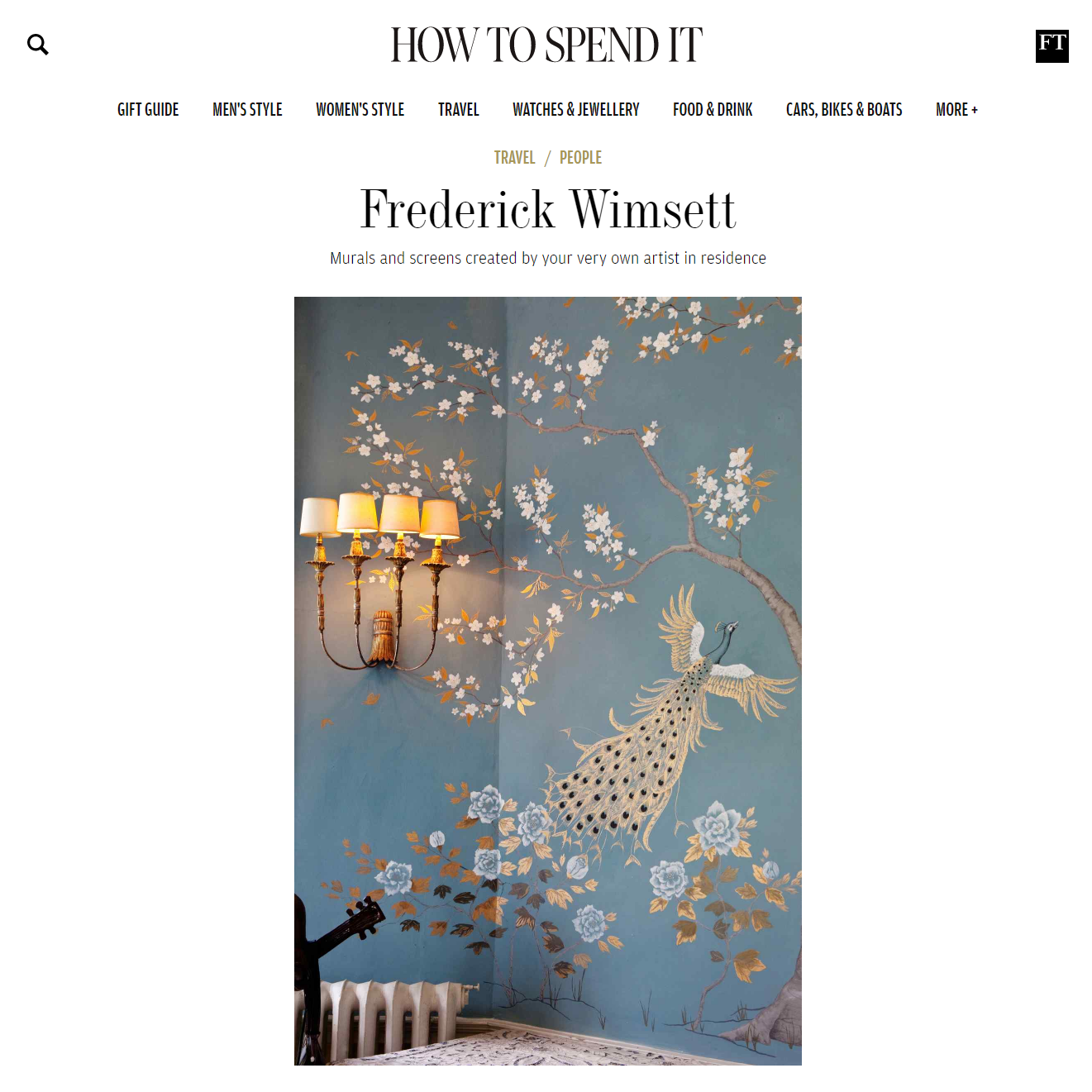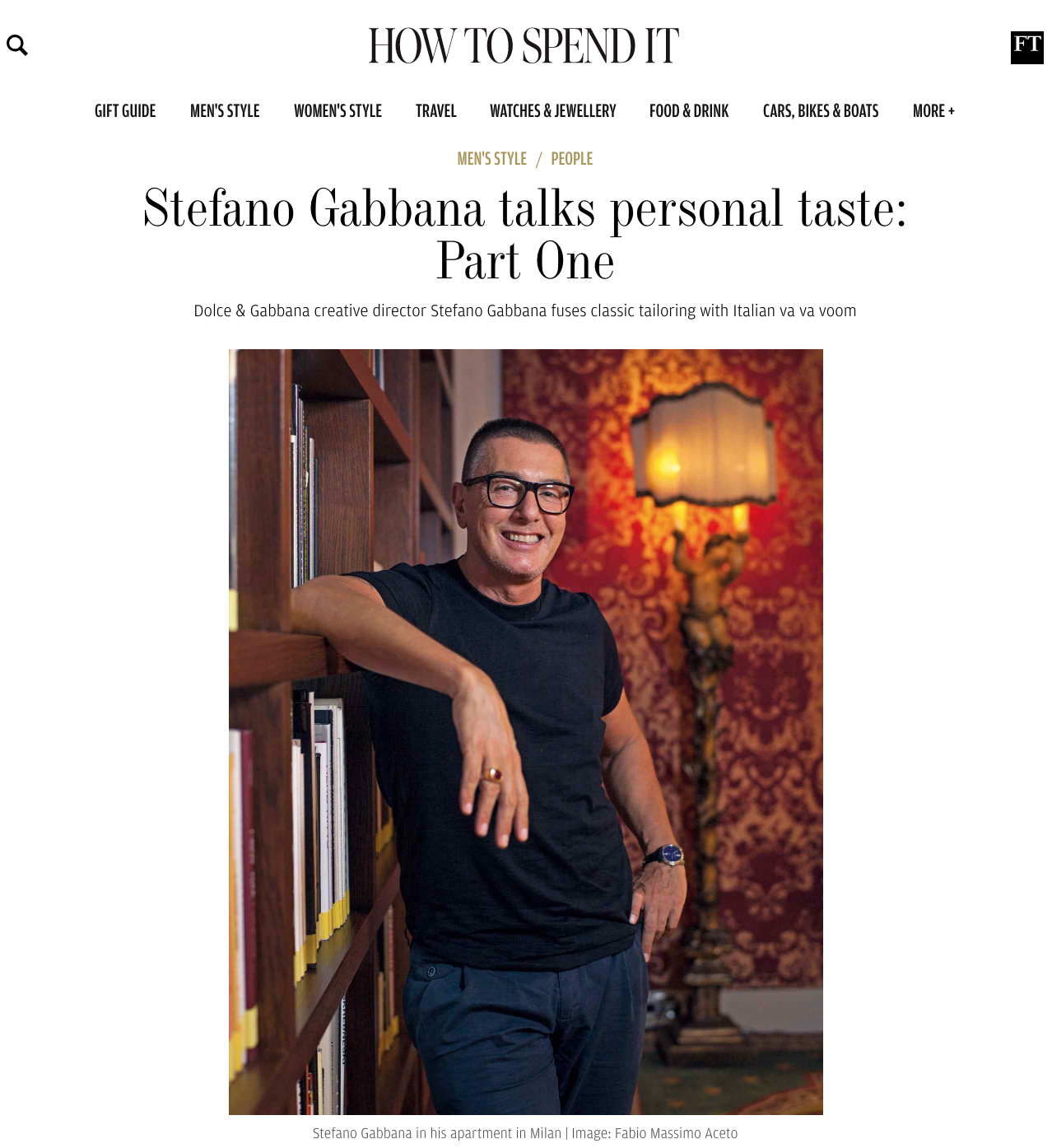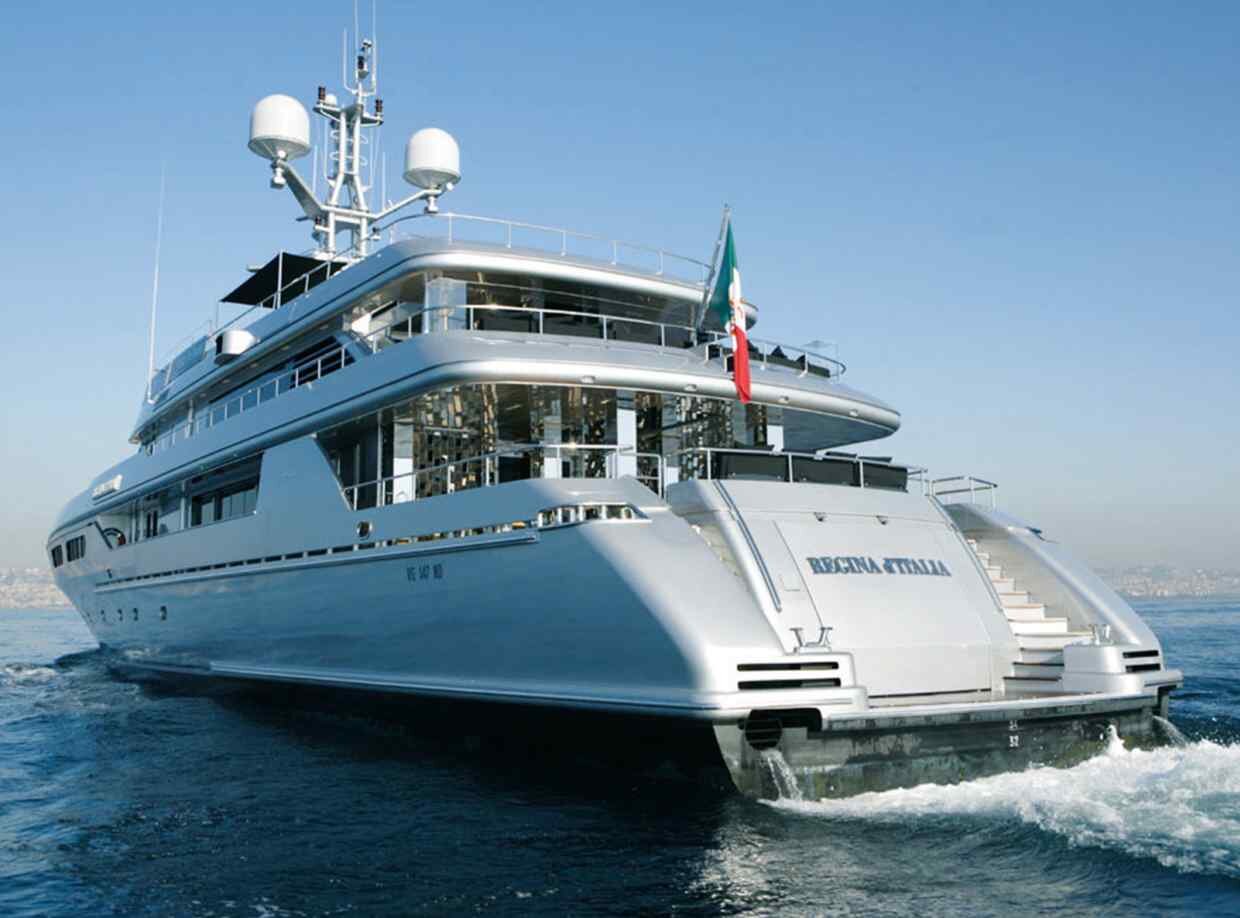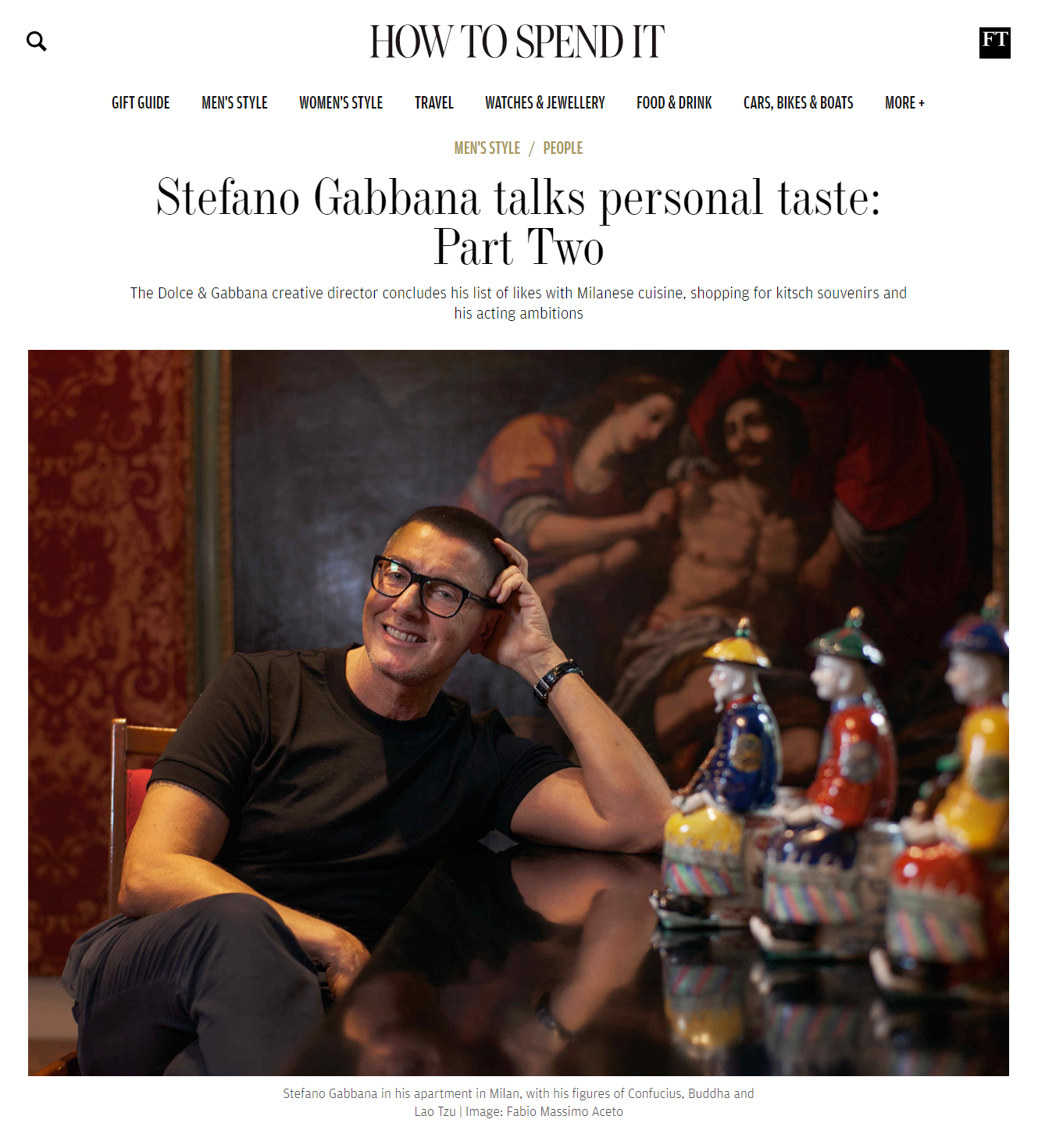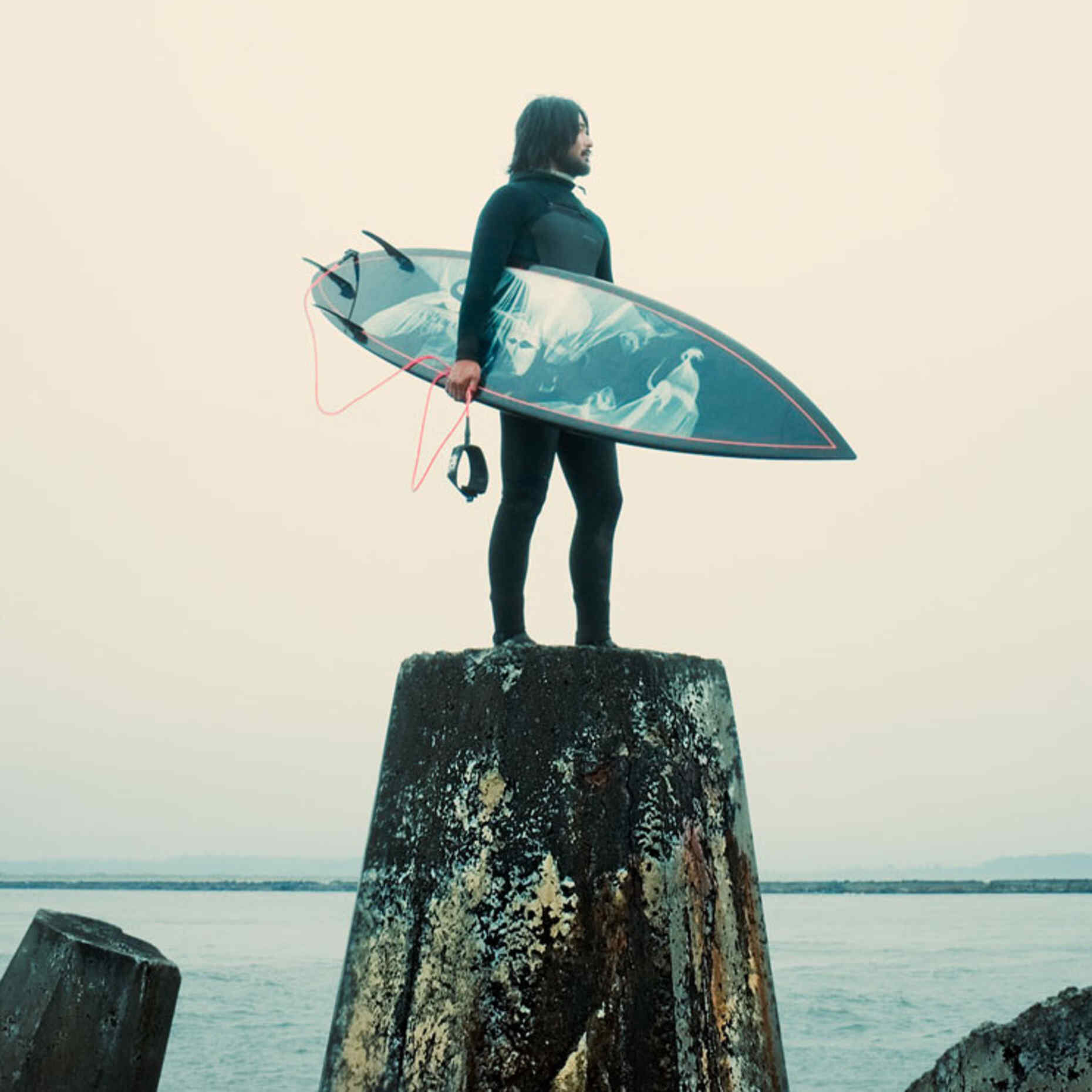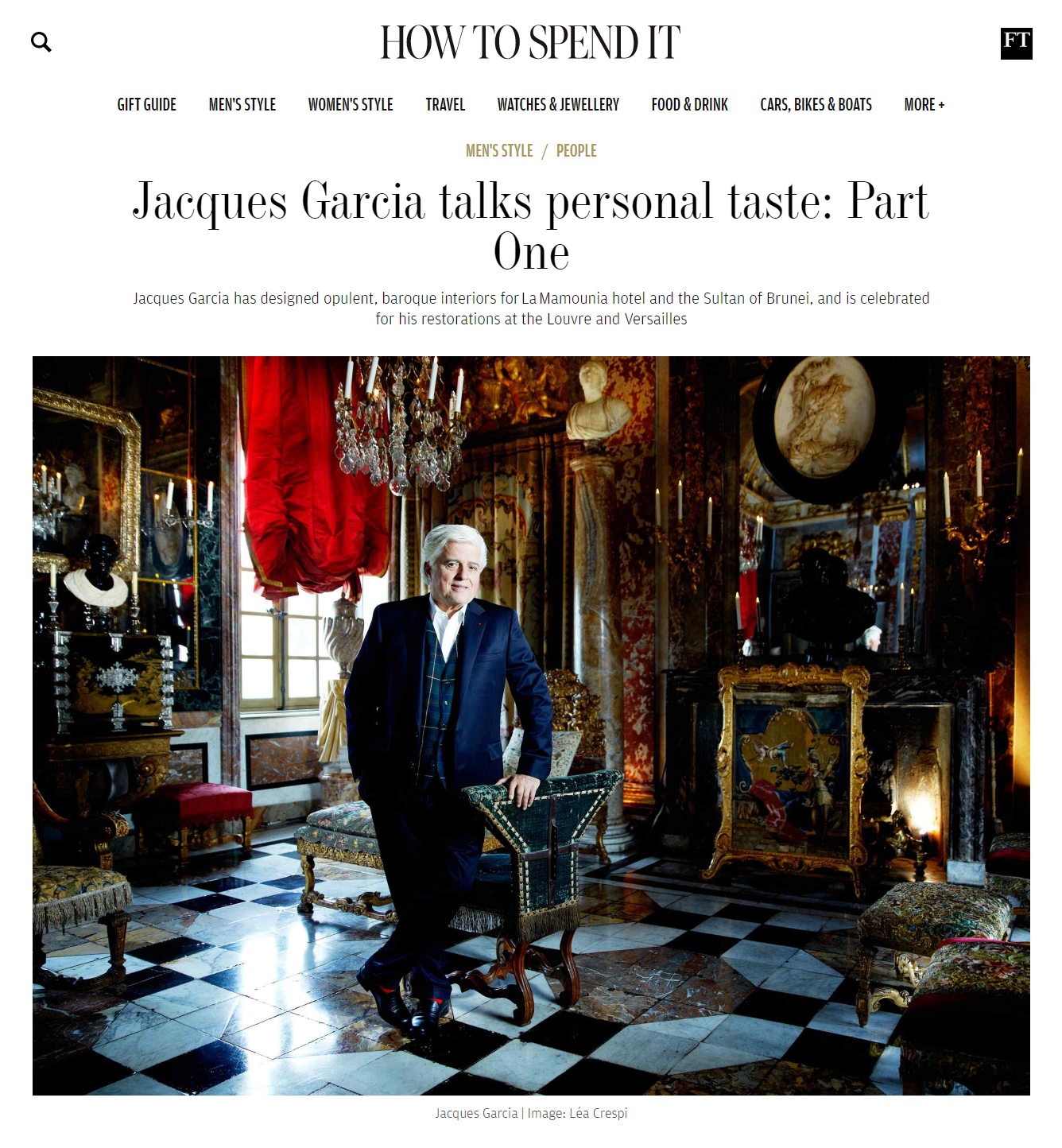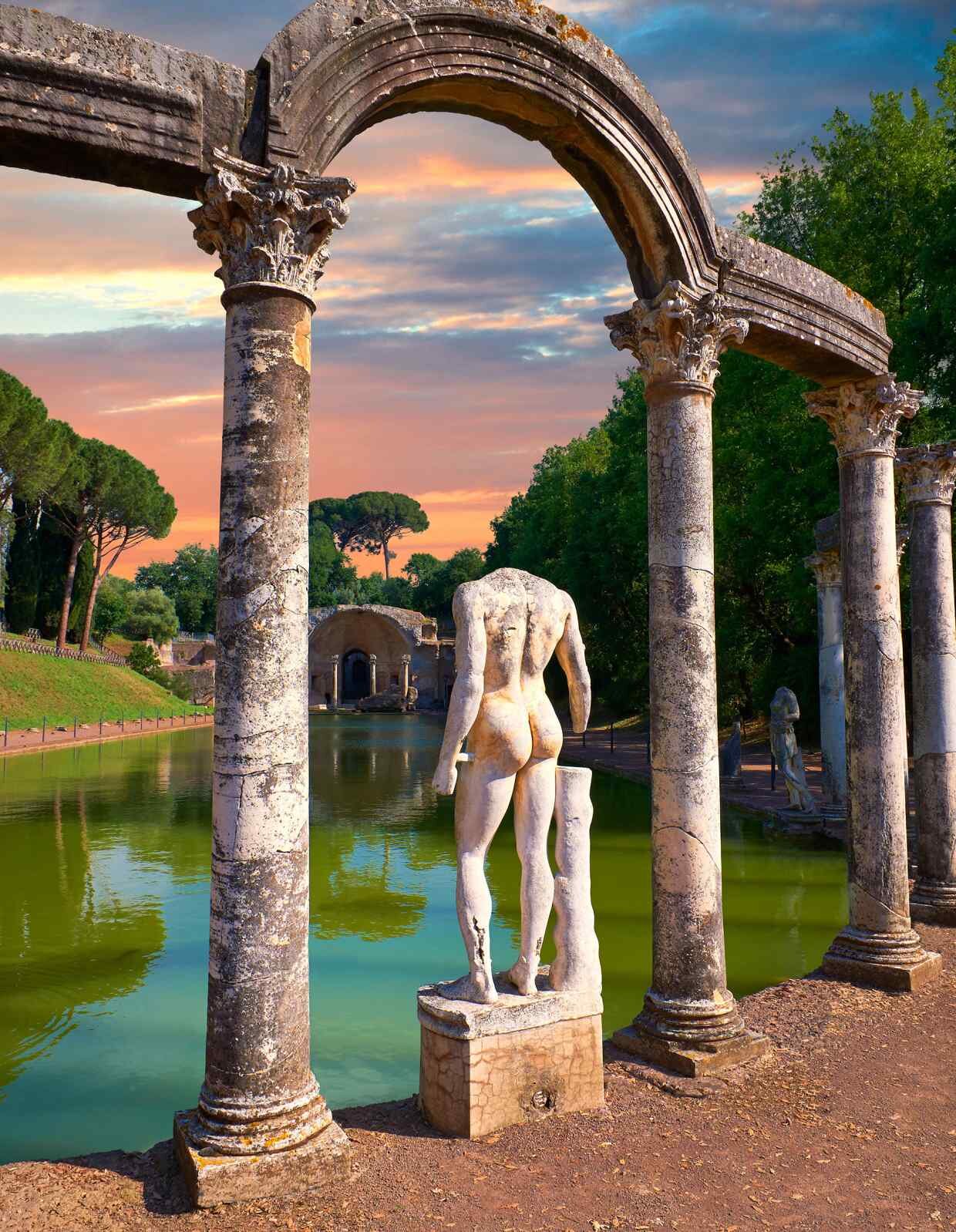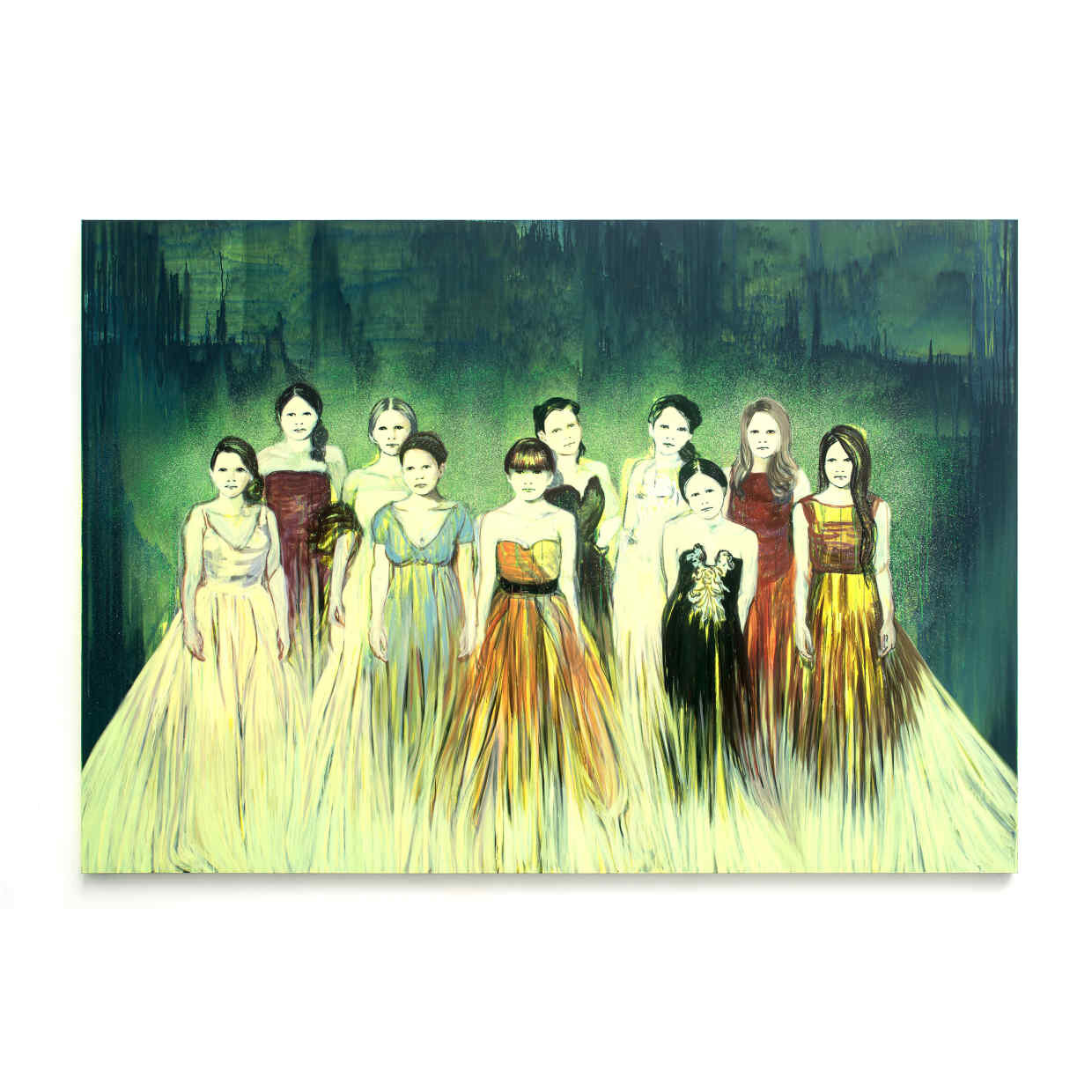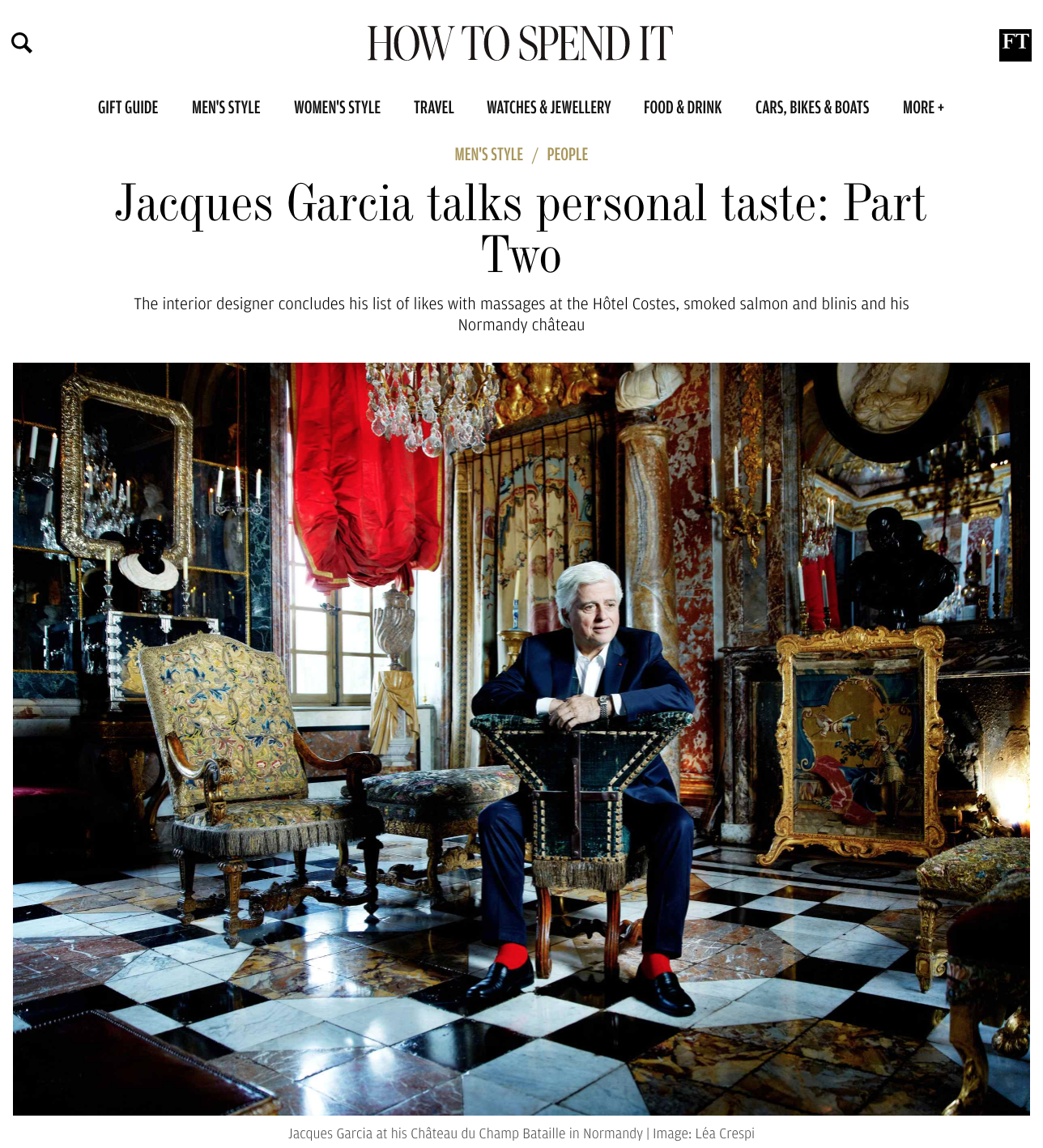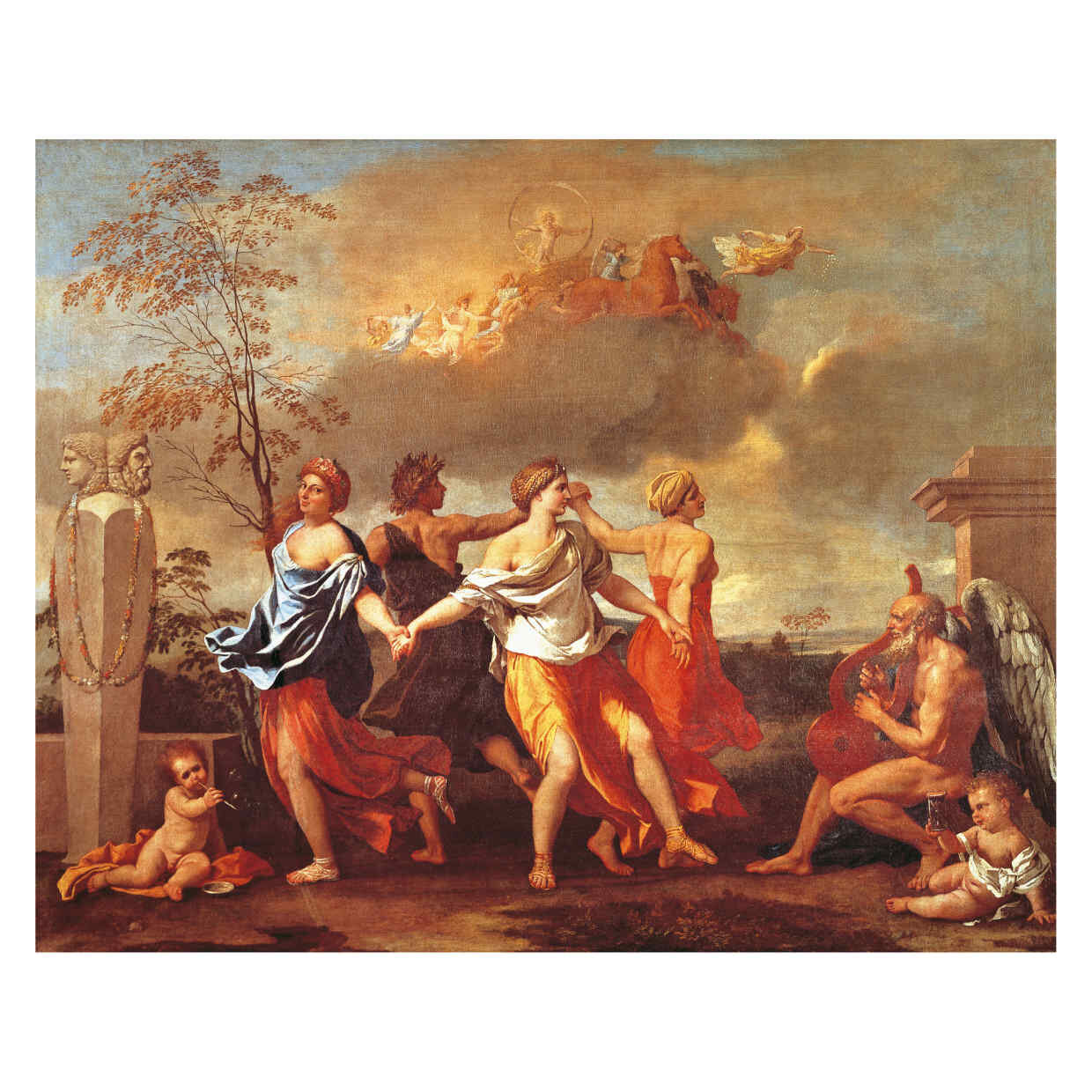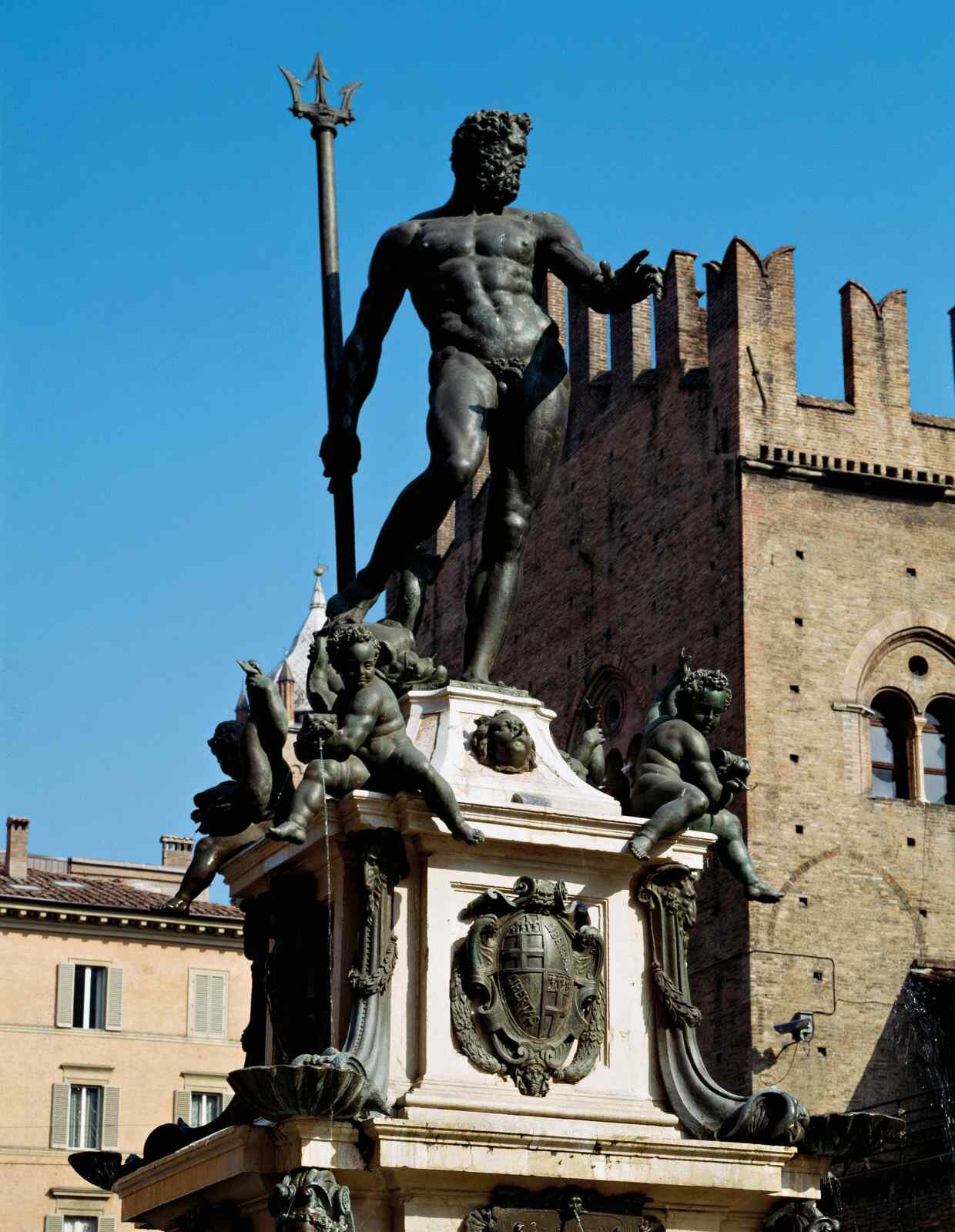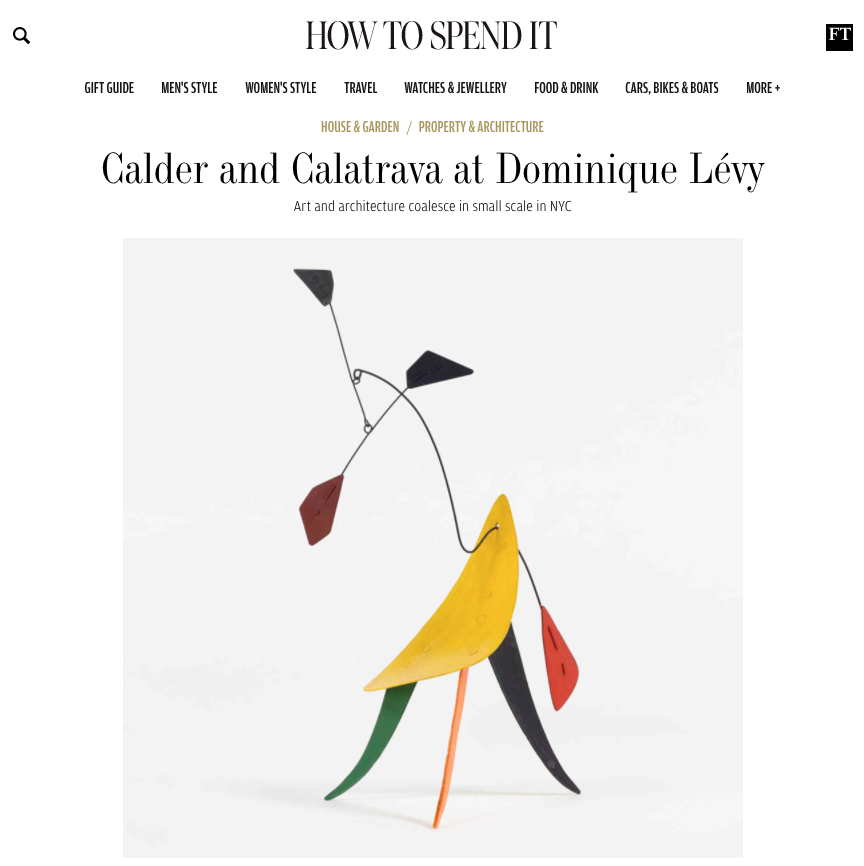Capitol
One-of-a-kind pieces and little-known lines from A-list designers make this North Carolina fashion boutique a true Southern belle
One-of-a-kind pieces and little-known lines from A-list designers make this North Carolina fashion boutique a true Southern belle
A two-storey boutique in the heart of Charlotte, North Carolina, might not be the obvious place to find the US answer to Colette or Dover Street Market. Capitol is a 6,000sq ft emporium full of fashion brands, haute joaillerie, cult accessories and even couture. “I wanted to fill a niche,” explains owner Laura Vinroot Poole (first picture). “Previously, customers had to travel to Paris or New York to find the latest couture. Now they come here.”
“I have a Southern advantage,” Vinroot Poole says of her relationships with designers ranging from Giambattista Valli – he did his first couture show outside Paris with Capitol – to Alber Elbaz and Marc Jacobs. “Being a fashion outsider has been a plus because people have trusted me from the start. Manners still count and designers like our way of doing business. They appreciate a handwritten thank-you note.” As a result, little-known lines and one-off pieces from A-list designers have been carried at Capitol since its inception in 1998.
| Image: Weston Wells
The sprawling space is anchored around a stunning courtyard that features a vertical garden by landscape designer Patrick Blanc, best known for his vegetal murals for the Cartier Foundation. The interior is equally dramatic: areas are organised by designer – chic skirts ($1,140) by Erdem Moralioglu here, playful Mary Katrantzou “Poppies” frocks ($1,170) there – and furnished with iconic modernist pieces by Jean Prouvé, Jean Royèr, Charlotte Perriand and Jacques Adnet and decorated in elegant hand-painted de Gournay wallpapers.
Loyal customers and occasional visitors such as India Hicks spend whole days perusing Roksanda Ilincic herringbone dresses ($1,565), geometric coats ($2,115) by Peter Pilotto and Christopher Kane’s boyfriend trousers ($1,170). To one side, there’s a cache of Sabbia Rosa lingerie including delicate silk slips ($1,135) with lace detailing, while another space is devoted to cool, emerging talent – a Vilshenko silk blouse ($1,046, second picture) and floral maxi-dress ($3,060), or Vivetta’s peony-pink cotton shirtdress ($415). When it comes to occasionwear, Vinroot Poole’s enduring relationships with designers such as Kate and Laura Mulleavy of Rodarte mean that custom gowns are also available on request.
Shoes are a particular strength and passion. Python Céline slip-ons ($1,400), chunky YSL platforms ($895) and Rupert Sanderson kitten heels ($595) – “perfect for garden parties” – figure prominently, as do embellished summery sandals by Marni ($580) and K Jacques ($255).
Accessories too are a major focus, from jewellery – opal-studded earrings by LA brand Irene Neuwirth ($15,280), spectacular pendants and cocktail rings (price on request) by Munnu Gem Palace with enormous emeralds and Indian sapphires – to vibrant shawls by Yaser Shaw ($1,100) and hand-embroidered Olympia Le-Tan minaudières ($2,070).
“We do things a little differently here,” says Vinroot Poole. “Whereas in New York you might find the latest Balenciaga collection in black, we offer it in hot pink. Our clients want one-of-a-kind pieces. I want them to make discoveries here and linger for a while.”
For more über-cool American fashion boutiques, see A’maree’s in California for cutting-edge brands with an A-list following or Vintage Martiniin Texas for cocktailwear with Hollywood cachet.
Double the Fun Meets Double the Flavor in Provence
If your French country vacation fantasy involves a beautiful and intimate hotel, unforgettable meals both elaborate and simple, and cultural diversions to entertain you or peace and quiet to soothe you, you might find yourself at the newly merged hotels Oustau de Baumanière and La Cabro d'Or in Les Baux-de-Provence.
If your French country vacation fantasy involves a beautiful and intimate hotel, unforgettable meals both elaborate and simple, and cultural diversions to entertain you or peace and quiet to soothe you, you might find yourself at the newly merged hotels Oustau de Baumanière and La Cabro d'Or in Les Baux-de-Provence.
LES BAUX-DE-PROVENCE, France – The last time I was in the bucolic area surrounding St. Rémy-de-Provence, it was with a one- and two-year-old in tow, so some of the mystique — and particularly the culinary magic — was lost on me. I didn't have time to savor lengthy meals — from simple, wood-fired pizzas on St. Rémy's town square, to sumptuous, multi-course meals at Oustau de Baumanière, the renowned temple of haute cuisine in nearby Les Baux-de-Provence. I managed to eat well, of course, but the entire visit was something of a blur.
On my recent visit, however, I got to see the surrounding Roman ruins, shop markets bursting with fresh lavender and local honey, and languish in the postcard-perfect pool.
CHECKING IN
Overview
The newly merged Baumanière and sister property La Cabro d'Or together comprise 56 guest rooms that give this property an intimate, authentic bastide-esque feel. The hotel has been owned by the same family for generations and everything operates like a small country inn, albeit one with seriously luxe, Relais & Chateaux touches. Spacious, simple rooms in neutral palettes capitalize on the Provençal light, and all feature views of the surrounding lush gardens and rocky Baux Valley.
What's New
The two boutique hotels merged in March 2015, but none of the special flavor of each has been lost. Instead, there are three discreet pools to choose from as well as a lower-key food offering (that is no less delicious) at La Cabro d'Or.
What's On Site
Wi-Fi is beside the point, as you'll really want to disconnect here. But for the hardcore, connectivity is easy. The spa is a real draw, and sybarites flock here for beauty and wellness treatments like gentle scrubs with Valmont products and restorative massages. Time did not allow for a visit to the sumptuous spa, but I've added this to my list for a subsequent visit. The hammam looked beyond wonderful. Sport is limited to lawn games like petanque, with maybe a game of tennis thrown in to burn off last night's €210 tasting menu. The property is strewn with beautiful bougainvillea, jasmine, and plane trees that are so much a part of southern France that you'll find it difficult to leave to explore the area's rich history.
The Food
Food is certainly the central focus at both properties. People pilgrimage to Oustau de Baumanière for chef Jean-Andre Charial's elaborate offerings that have lightened in recent years to reflect people's desire for delicious yet healthful cuisine. Exquisitely simple fruits and vegetables — locally sourced asparagus, artichokes, wild strawberries — as well as red mullet, succulent duck, and risottos are all prepared in inventive ways.
At La Cabro d'Or, chef Michel Hulin prepares gorgeous steamed sea bass with tajine-like vegetables, rack of lamb, and a cheese course that will not soon be forgotten — all in the most magical, plein air patio setting.
The wines are central at both restaurants, with Oustau's cellar containing more than 60,000 bottles of some of the world's finest vintages including great Bordeaux like Pétrus, d'Yquem, Haut-Brion, and Lafite. Rare Champagnes include Krug's Clos du Mesnil and d'Ambonnay, as well Dom Perignon Oenothèque. But for me, a glass of simple, locally produced rose sipped on the terrace at sunset is by far the way to go.
In the Room
The 56 rooms here range from cozy classics suitable for two to expansive suites and prestige rooms that can accommodate three or more. The décor is Provençal chic: white-washed walls, terracotta and natural wood finishes, and luxurious linens. Each space has been updated with sleek TVs and air conditioning — a must as the temperatures soar in July and August.
This Place Is Perfect For
Foodie couples who might want a bit of culture, but really want a relaxing, restorative experience. Ideal as a three-day weekend from the U.K. or elsewhere in Europe as it is easily accessible by Marseille, just minutes away.
But Not So Perfect For
Families with small children. The management can certainly attend to little people — special meals are always an option and excellent babysitters are in plentiful supply — but the point is to savor the silence, the sun, and, most importantly, the excellent food. Meals can last hours, and this doesn't typically jive with the under-five set.
Room with a View
I've stayed at both Oustau and La Cabro d'Or, and while it is impossible to go wrong at either property, Oustau has a certain magic that I will return for time and again. I stayed in a deluxe room with a terrace which was absolutely lovely — especially with the early morning floral scents wafting in — but I'd really love to load it up in an expansive suite with a separate living room for that home stay feel.
CHECKING OUT
The Surroundings
One could simply park it in Les Baux-de-Provence, a sweet village set atop a barren plateau in the Alpilles — and just take in the expansive views of the Camargue and Arles in the distance. Resist the temptation to sit poolside and get up to go explore the medieval castle and spare St. Catherine's 12th century church in town. Sixteenth-century mansions-turned-museums like Yves Brayer and the Louis Jou Fondation are worth a visit for their art collections and architecture.
What to Do Nearby
In the immediate area, you'll want to hit the medieval fortress, the Val d'Enfer, and Carrières de Lumière (Quarries of Light). Must-sees in St. Rémy-de-Provence include the archeological site Glanum and the cloisters of Saint-Paul de Mausole. Château of Barbegal in nearby Fontveille is also worth a detour, as are the arenas and amphitheatres of Arles. The Fondation Vincent Van Gogh is another Arles highlight, while lovers of contemporary art and design should make a beeline for the Frank Gehry and Annabelle Selldorf-designed LUMA Foundation, for photography, painting, film, and more.
It's virtually impossible to get a bad meal in this part of the world, and even the simplest pain bagnat and Nicoise pizza are consistent crowd pleasers. Au Bistrot Marin (68 Avenue de la Vallée des Baux) and La Place in the quaint village of Maussane-les-Aplilles are worth a detour for a decadent lunch. Le Bistrot du Paradou is a must for authentic country fare in a relaxed setting. This simple country house is quintessential Provence (at least to this American), complete with a warm wood and tile interior and dishes such as roast chicken with crispy, salty skin, and pommes Dauphinoise.
PLAN YOUR TRIP
How to Get There
Marseille Provence Airport (MRS), at an hour's drive, is the nearest airport. Directs flights from the United States are available into Nice Côte d'Azur Airport (NCE), approximately a two-hour drive away.
Getting Around
A car is a must for exploring the area. Note that roads are winding and have been known to induce car sickness in the faint of stomach.
BOOK IT
Rates start at €200. Click here for reservations.
Frederick Wimsett
Murals and screens created by your very own artist in residence
Murals and screens created by your very own artist in residence
“I love bringing a sense of theatre into homes and work spaces,” says American-born, Somerset and London-based Frederick Wimsett of the elaborate painted walls (from £6,000) and chinoiserie screens (from £4,500, fourth picture) he creates for discerning clients, including Kate Moss, Alice Temperley and Christie’s auction house (third picture). “Designs are often inspired by the location, architecture and surrounding flora and fauna, as well as a client’s preferred colour palette.”
For a commission, clients discuss with Wimsett how the room will be used, what the light will be like at a particular time of day and how much detail versus negative space they would like to see. “I often bring in elements from nature that reawaken a room and transform a living space,” he says.
For murals, the self-taught artist hand-paints directly on a client’s walls – like a very personalised artist-in-residence. Each of his creations – from twisting vines that envelop a room, to elaborate pheasants and peacocks in flight (first and second pictures) – uses acrylic paints, gilding, wax, metal and gold leaf. It takes approximately 10-15 days to complete a single wall, while entire rooms can take up to six weeks. Asian-inspired screens, doors and exquisitely detailed wall panels are all created at the artist’s studio in Somerset.
Home is where the art is? Very much so.
4 Bay Area Paper Makers Championing the Art of Correspondence
The texture of handmade paper, the loops and bowls of a friend’s distinctive handwriting, the appreciation of the time and care taken in sending: These are just a few of the great pleasures of receiving a physical note. However, as the letter—and even the blithe summer postcard—has long been superseded by the Facebook post, it has become even more meaningful to receive a thoughtful, handwritten missive or invitation. Fortunately, a coterie of Bay Area artisans is carrying on the civilized tradition of the fine stationer. Embellishing sumptuous stock with letterpress, engraved imagery and hand gilding, San Francisco papermakers bring together age-old processes with innovative techniques. Following are four Bay Area ateliers championing the art of correspondence.
Julie Holcomb
A Bay Area icon—she has been a fine printer for more than 30 years—Julie Holcomb is a specialist in custom letterpressing and hand-drawn calligraphy. Emeryville-based, Holcomb brings a minimalist aesthetic to the bespoke invitations, stationery and calling cards she creates for clients like Chez Panisse and Pentagram. Using mould-made, 100-percent cotton paper that is crafted for her in a single, thick layer—versus the multiple, laminated sheets used in inexpensive stationery—Holcomb creates warm, elegant printed matter that is weighty and subtly textured. Hand-applied edging in rich metallic and enamel foils is a studio signature. By appointment only, 3601 63rd St., Emeryville, 510-654-6416,
Dependable Letterpress
A disciple of Julie Holcomb, founder Joel Benson operates a Heidelberg Press out of his five-person Portrero Hill studio. Benson produces exquisitely simple blind deboss business cards, die-cut save-the-dates and holiday greetings—many with hand-painted edges and perforations—all with a tasteful, graphic sensibility. Uncoated tree fiber papers also lend Dependable Letterpress’ personal stationery a tactile quality. 610 22nd St., Suite 247, 415-503-0981.
Rhiannon Alpers
Artisan/owner Rhiannon Alpers is a true papermaker, letterpress printmaker and bookbinder with a strong focus on crafting paper stock using cotton, linen and plant fibers. Her custom papers feature poetic elements ranging from tulip stems—which lend a textural feel—to vibrant bird of paradise petals that yield rich, maroon hues. Alpers shares her craft via studio workshops including “Papermaking: Exotic Fibers” (July 11) and “Sculptural Papermaking” (July 30 and August 29). 1890 Bryant St., Suite 308.
Twig & Fig
Berkeley’s Gourmet Ghetto is home to this retail paperie and print studio that specializes in fine wrapping papers and intricate, laser-cut invitations inlaid with wood, plastic and metal filigree. In addition to custom, couture creations, Twig & Fig stocks papers sourced from around the globe (Gmund from Germany, Arches watercolor paper from France, and air-dried Lama Li varieties from Nepal, to name a few), as well as wax seals and elegant Manuscript fountain pens. The design loft offers a serene space to peruse papers and sip fine teas. 2110 Vine St., Berkeley, 510-848-5599.
A version of this article appeared in the June/July 2015 issue of San Francisco Cottages & Gardens with the headline: The Art of Correspondence.
Hedley & Bennett handmade aprons
A culinary e-shop that attracts the world’s best chefs
A culinary e-shop that attracts the world’s best chefs
From butchers, bakers and bartenders to gourmets and gluttons, many a foodie has roundly rejoiced upon discovering Hedley & Bennett’s e-store specialising in colourful, high-quality kitchen aprons, chef coats and caps made from American canvas, European linens and Japanese selvedge denim.
The brainchild of former line cook Ellen Bennett, the collection has garnered a high-profile following among chefs including Nobu Matsuhisa, Momofuku’s David Chang and April Bloomfield of The Spotted Pig, as well as Jon Shook, Vinny Dotolo and Ludo Lefebvre of LA’s Trois Mec. But kings of domestic kitchens are catching on fast – becoming fans not only of details such as adjustable straps, lined pockets and graphic prints, but also of the monogramming customisation service too.
The site features over 40 styles: full aprons (from $85, second picture) made of graphite canvas and linen come in colours from rhubarb red with orange ties (first picture) and canary yellow with white ties to navy with pink and parsnip with navy. Shorter-style bistro aprons in reds, whites, blues and beige come in several lengths – from the 27” Commis ($70) to the 14” Tik Tak Mini ($67) – and all have practical bucket pockets. Tailored chef coats (from $120) in lightweight cotton or indigo chambray suit the at-home amateur who loves a theatrical approach. Every detail points to the fact that these garments are designed by a chef who understands the hot, messy workings of a kitchen.
For another e-cache of chic culinary gems, try Quitokeeto, or to craft the apotheosis of kitchen heaven, approach Smallbone of Devizes for a bespoke design kitchen.
Stefano Gabbana talks personal taste: Part One
Dolce & Gabbana creative director Stefano Gabbana fuses classic tailoring with Italian va va voom
My personal style signifiers are a white, tailored dress shirt and a black waistcoat. I can’t quite remember when I started wearing this combination or why, but it makes me feel comfortable and smart. I like my shirts to be perfectly pressed and I’m happy to wear a waistcoat for both day and evening. Once upon a time my answer might have been a ruby earring, or two watches worn on the same wrist, but I realise that my style is changing with age.
The last item of clothing I added to my wardrobe was a red mikado-silk jacket. I designed it for our summer show and found it to be full of energy, strength and colour. I recently wore it to a party in Milan and then again on a trip to Shanghai. Mikado has a wonderful consistency because it’s a stiff silk with a texture I love. It’s the first time I’ve worn a jacket like that and it felt very festive.
Gabbana’s mikado silk jacket | Image: Fabio Massimo Aceto
The site that inspires me is Sicily, which is so very special. From its baroque churches to the Norman and Arabic influences, it is like no other part of the world. It’s an island with mountains where you can ski, there’s a dramatic volcano in the form of Mount Etna, and it’s home to some of the world’s most beautiful cities, including Palermo, Catania and Modica. And then there is swimming in the sea off our boat, with the Aeolian Islands and the beaches of Cefalù in the distance. I could talk about it for hours.
The last music I downloaded was Right Here, Right Now by Giorgio Moroder and Kylie Minogue, which has a great beat. Kylie’s our little princess; she’s a real friend and I love her – and her music – very much.
An unforgettable place I’ve travelled to in the past year is the Maldives. The atolls are so beautiful and pristine that it makes you feel lucky just to be there. I try to go when it’s winter in Milan, just for a bit of sun and rest. I can’t say which atoll is my favourite but I particularly like staying at the One & Only Reethi Rah; the water villas set over the crystal-clear lagoon are a dream. reethirah.oneandonlyresorts.com.
A recent “find” is the China Club in Hong Kong, a retro-chic members’ club that captures the traditional atmosphere of China in the 1930s and 40s – a period of time I adore. It feels a bit like being in Shanghai, with elements of Hong Kong and even Europe thrown in because of all the art and antiquities. I also love the teahouse vibe and authentic cuisine. 12/F, The Old Bank of China Building, Bank Street, Central, Hong Kong (+852-2521 8888; www.chinaclub.com.sg).
The village of Portofino on Italy’s Ligurian coast | Image: Shutterstock/Haveseen
An object I would never part with is a simple gold band with a ruby, my favourite stone. I had it made 20 years ago by a jeweller in northern Italy and it’s like a form of protection. It reminds me of my parents, and I only take it off to sleep or swim.
In my fridge you’ll always find fresh fish, particularly swordfish and sea bass, that I get at Pescheria Spadari, just a minute from Duomo Square in Milan. There are also eggs, vegetables and more vegetables – whichever are in season. I try to follow a balanced Mediterranean diet but there will always be a jar of Nutella too – though not in the fridge or it goes hard. 4 Via Spadari, 20123 Milan (+3902-878 250; www.pescheriaspadari.it).
The village of Portofino on Italy’s Ligurian coast | Image: Shutterstock/Haveseen
The thing I’ve got my eye on is a late summer holiday to the seaside. I spend my life flying all over the world so I like a relaxing beach vacation. I haven’t picked a place yet, but Portofino or sailing in the Mediterranean are always good choices.
The best gift I’ve given recently was a love letter. I’ve given so many material gifts but for me, a letter is the most beautiful because it comes from the heart. I’m not telling you what was in it.
Right Here, Right Now by Giorgio Moroder and Kylie Minogue
And the best one I’ve received was the reply to my love letter. I wasn’t expecting it, which made it all the more special. Reading the words of a person who loves you is, I think, a singular and wonderful experience.
My favourite websites are Corriere della Sera for keeping up to date on news and fashion reviews; the Daily Telegraph for its spot-on fashion blogs; and Vogue UK, where I have fun reading columns by Suzy Menkes. Her observations are always spiced with a bit of irony. www.corriere.it. www.telegraph.co.uk. www.vogue.co.uk.
Stefano Gabbana talks personal taste: Part Two
The Dolce & Gabbana creative director concludes his list of likes with Milanese cuisine, shopping for kitsch souvenirs and his acting ambitions
The Dolce & Gabbana creative director concludes his list of likes with Milanese cuisine, shopping for kitsch souvenirs and his acting ambitions
My style icons are great divas and actors – Sophia Loren, Anna Magnani, Monica Vitti, Claudia Cardinale – who embody the la dolce vita spirit. Then there are the fashionable men – of them all, Marcello Mastroianni was the most elegant.
The last meal that truly impressed me was tortellini en brodo, a typical northern Italian kind of pasta cooked by my mother that, for me, means family. I also love simple Milanese food – saffron rice, vitello milanese, vegetable purée – and last year we opened the Martini Bistrot on Corso Venezia in Milan, which is focused on this kind of cuisine. The beef tartare with capers and sun-dried tomatoes is outstanding. Corso Venezia 15, 20122 Milan (+3902-7601 1154; www.dolcegabbana.com/martini).
The Greek theatre in Taormina, Sicily | Image: Getty Images
If I didn’t live in Milan, the city I would live in is London, because when I’m there I feel at home. The people have a distinct energy and express it every day in the way they dress – their combination of eccentricity and tailoring fires my curiosity. When I’m in town I like walking around the shops and parks in Primrose Hill, and meeting friends for a drink at Claridge’s or a lively dinner at Hakkasan. If I didn’t need to work, I’d move to Taormina, a place that really takes your breath away even after scores of visits; there’s always some surprising niche to discover. I love having drinks overlooking the sea on the terrace of San Domenico Palace Hotel and dinner at the classic Belmond Grand Hotel Timeo, followed by a summery granita with whipped cream from Bam Bar just down the street. Bam Bar, 45 Via di Giovanni, 98039 Taormina (+3909-422 4355). Belmond Grand Hotel Timeo, 59 Via Teatro Greco, 98039 Taormina (+3909-422 3801; www.belmond.com). Claridge’s, 49 Brook Street, London W1 (020-7629 8860; www.claridges.co.uk). Hakkasan, 17 Bruton Street, London W1 (020-7907 1888; www.hakkasan.com). San Domenico Palace Hotel, 5 Piazza San Domenico, 98039 Taormina (+3909-4261 3111; www.san-domenico-palace.com).
The last things I bought and loved were my two Bengal cats – Zambia, the she-cat, and Congo, the tom. I fell in love with them at first sight. I take them to the office with me and they make wonderful playmates. They have to be careful though, as I’ve also got three Labradors – Rosa, Totò and Mimmo – and they can be quite rough.
The people I rely on for personal grooming and wellbeing include my barber, Pietro. He’s Sicilian and works at our barbershop in Milan. I go every week because I like having my hair in order, and always very short. He cuts it with scissors – the way it should be done. I also have a personal trainer who comes to my house every morning at 7am and we work out together in my home gym.
An indulgence I would never forgo is spending time on my iPad: I like to FaceTime with my mother on a regular basis; I enjoy uploading photos on Instagram, and I play Monopoly to relax.
Marcello Mastroianni | Image: Getty Images
The best souvenir I’ve brought home is difficult to pick because I buy so many. I can’t imagine a trip without a pause at some local market or souvenir shop. On a recent trip to China I bought little figurines of the three thinkers – Confucius, Buddha and Lao Tzu – and I have a golden gondola from Venice on the desk in my office that reminds me of a special time in that city. I also collect Christmas decorations and buy new ones wherever I go, as long as they’re absolutely kitsch. Some of my favourites were from the Christmas market in Nuremberg where I bought pretty little gingerbread hearts. Hauptmarkt 18, 90403 Nuremberg (+49911-23360; www.christkindlesmarkt.de).
The one artist whose work I would collect if I could is Caravaggio. He was one of the greatest baroque painters and used light in a beautiful, dramatic way. I’ve always wanted to own one of his works and, while I know it’s not easy, there’s no harm in dreaming.
Electric Diner, Portobello Road
The beauty staples I’m never without include our Velvet Patchouli fragrance, which has a very strong scent of incense, like the wood in an old house. I wear it every day without fail. I also use shampoo and soap from my local pharmacy and a gentle face cleanser for sensitive skin. Velvet Patchouli,£155 for 50ml EDP; www.harrods.com.
My favourite room in my house is my kitchen. My collection of colourful, hand-painted ceramic plates from Caltagirone in Sicily is displayed throughout the room, and I like to spend time here cooking dishes from the north that remind me of my family, as well as southern Italian dishes that Domenico helps to prepare.
If I had to limit my shopping to one neighbourhood in one city, I’d choose London and the areas around Notting Hill and Portobello Road. I could spend entire mornings just wandering from stall to stall on market days. I also like Rellik for vintage finds, and I follow my shopping with a great lunch and a film at the Electric Cinema and Diner. Electric Cinema and Diner, 191 Portobello Road, London W11 (020-7908 9696; www.electriccinema.co.uk; www.electricdiner.com). Rellik, 8 Golborne Gardens, London W10 (020-8962 0089; www.relliklondon.co.uk).
The books on my bedside table have been replaced by magazines, like the British and US editions of Vogue and Harper’s Bazaar. I also usually have a pad and pen handy to sketch or jot down ideas. There are feelings and memories that I can only express this way.
If I weren’t doing what I do, I would be an actor. I’ve done a few cameos in films with Domenico and I feel very comfortable in front of the camera. The last part I played was in Woody Allen’s To Rome with Love and I had a great time. You have to study and memorise a lot, but I think it’s such fun. I would also like to be a director – with a big megaphone like at Cinecittà – so I could bring order to a set. I often play this role when we are shooting our ad campaigns.
Discover the personal style files of jewellery and accessories designer Lara Bohinc, or Chloé creative director Clare Waight Keller.
Ride of a lifetime
Bespoke surfboards from a London-based company with global connections and a cult following
Bespoke surfboards from a London-based company with global connections and a cult following
The (somewhat curiously) London-based bespoke surfboard company Swami’s is the brainchild of surfing enthusiast Giles Dunn and his wife, Ilka, who named the company after a picturesque Californian surf break. Their passion for surfing and love of art and design has led – over 10 years of independently run operations – to a cult following and collaborations with tastemakers such as Paul Smith (limited-edition board of 50 from £1,200) and Orlebar Brown. Alongside these high-profile partnerships, Swami’s also maintains a commitment to European artisans and working with environmentally sustainable materials.
The process of commissioning a surfboard involves working closely with Dunn on the selection of shape, size, length and design scheme. Much like a custom suit, clients supply information regarding height and weight, as well as level of experience and preferred surfing conditions, so that each of the handmade-to-order boards can be specifically tailored to their needs. Dunn then works closely with his global network of eight shapers, who stretch from Cornwall to South Carolina to the beaches of Australia and are masters at honing boards from both foam and wood.
After a particular model has been sculpted, chic graphic elements – from the shaper’s signature to the rider’s initials – come into play. Specially commissioned images can be incorporated into the company’s signature pared-down designs, which are drawn on rice paper and then laminated onto the decks, where they are sealed by layers of fibreglass, tinted with custom resin and polished to a high gloss.
From designs such as the limited edition of 20 Phantom Feather boards (second picture, £3,600), which are produced in conjunction with online shop 20ltd and have a striking feather motif, to The Monk (£685-£950), an iconic 1950s-inspired model, each is a high-performance board with its own character. Handmade in the UK, the Monk models feature double-wrapped patched decks, tail blocks and split gloss finishes, which are designed for harder turns and bigger barrels. Other special editions include the Turban Wrap (from £1,200) – a board inspired by Indonesian travels that beautifully incorporates silk fabrics into the surface layers.
And just in time for summer’s swells is the launch of Swami’s bespoke wetsuit service. Made in the UK from the finest Japanese Yamamoto neoprene, the wetsuits (from £295) are an even slicker way to enjoy the perfect ride.
Tory Burch’s The Hamptons
The American fashion designer launched her eponymous label, known for chicly polished staples, in 2004 and last year was one of Forbes’ Most Powerful Women
The American fashion designer launched her eponymous label, known for chicly polished staples, in 2004 and last year was one of Forbes’ Most Powerful Women
My weekends centre around family, sport and being outdoors. The day starts with tennis at home – our same group of 10 women has been playing competitive round-robins for years, and this is both a Saturday and Sunday ritual. Then, after breakfast, I’ll head to the local markets to buy supplies for the evening. I tend to have lots of house guests at weekends and might have between 12 and 20 people over for a dinner party in our pool pavilion.
My first stop is always The Green Thumb [pictured] for organic blueberries, eggplant and tomatoes. Next I’ll head to Schmidt’s for steaks and fresh fish, or to Clamman for buckets of shellfish. My teenage sons and I also like to go clamming and crabbing, so we’ll often get our own catch as well. For dessert I like to serve classic chocolate-chip cookies and fruit pies from Tate’s Bake Shop.
After lunch made in our pizza oven by the poolhouse, I’ll go shopping. I’m always looking for things to inspire me creatively and I love Mecox for beautiful objets for the home and garden, Melet Mercantile in Montauk for incredible vintage clothing and furniture, and Tiina the Store in Amagansett for great Scandinavian glassware and clothing. No afternoon is complete without an ice cream from the retro Candy Kitchen.
The rest of the afternoon is usually spent in my cutting garden where I grow snapdragons and dahlias. I find flower-arranging therapeutic, and especially love creating bouquets of sweet peas, cherry branches and hydrangeas. I also usually have flowers sent out by Jitney from Dutch Flower Line in the city, so that our house is full of blooms when we arrive on a Friday evening.
On the Saturday nights I’m not entertaining I’ll go to Italian restaurant Sant Ambroeus for a late plate of pasta, or to Nick & Toni’s, a bustling East Hampton institution with a series of small, intimate rooms that are great for cosy dinners and conversation. If I’m feeling ambitious I might go and hear some live music at The Stephen Talkhouse, but mostly I just enjoy grilling lobsters in the backyard in the company of my three sons, family and friends. Our group will often linger until midnight, listening to music – some Van Morrison, Neil Young and rap for the kids – and talking.
Sunday mornings start with tennis again, followed by – if my children are in charge – either a basketball game on the court at home or tuna fishing off the tip of Long Island. Afterwards I’ll have a refreshing coconut water from Juice Press or a light lunch at Tutto Il Giorno, which has a beautiful garden.
On rainy afternoons I might pop into the Pollock-Krasner House, which puts on exhibitions throughout the summer, or to the Herzog & de Meuron-designed Parrish Art Museum, where I love the pieces by Louise Nevelson and Roy Lichtenstein. Or we might go to Guild Hall in nearby East Hampton, which shows great plays and cabaret, as well as live screenings from the Met and of the latest National Theatre hit.
When the sun is shining, my afternoons are typically spent by the pool followed by an early takeaway supper from La Parmigiana, one of our family’s favourite spots for authentic veal parmigiana and prosciutto with fresh mozzarella. If we go out, it will be to The Old Stove Pub, an old Sagaponack classic famous for its Greek food and enormous steaks. By 8pm I feel refreshed, calm and ready for the two-hour drive back to the city – and for what will likely be a busy week ahead.
For more Hamptons hotspots, take a look at the personal style file of Bulgari’s creative director Lucia Silvestri or for more beachside adventures in the US, try Melissa Odabash’s perfect weekend in Palm Beach.
New Mexico’s Inn of the Five Graces
Five-star kitsch marries secluded calm in this haute hippie bolthole
Five-star kitsch marries secluded calm in this haute hippie bolthole
In summer, there are few places I love escaping to more than the High Desert Southwest area surrounding Santa Fe and Taos, New Mexico. I have visited this haute hippie part of the US several times over the past 25 years, and my most recent visit took me to The Inn of the Five Graces (about $425-$2,500 per night, first picture), a 24-room boutique bolthole.
The name “Five Graces” refers to the idea that the five senses are all vitally important to one’s enjoyment of life, and, from the scent of piñon trees to the authentic adobe buildings decorated with vibrant textiles, exotic antiques and colourful tile work, a stay here is an exercise in glorious sensory overload.
The Inn’s owner-curators, Ira and Sylvia Seret, source furnishings, decorative objects and linens from central and south Asia, and many of the suites – with names such as Luminaria, Firebird, Lapis, Jasmine and Persimmon – feature a mix of Afghan dhurries, Tibetan artefacts and Turkish kilims, as well as intricately embroidered Indian fabrics (second picture). My bathroom was vast and adorned with elaborate mosaics designed by Seret herself. In the main room, a traditional kiva fireplace (third picture) was perfect for one chilly summer evening.
During the day, being outside is everything, and the Inn’s secluded patios and shaded gardens were my favourite place to relax – from enjoying a breakfast of huevos rancheros (eggs, black beans, avocado and chilies on a tortilla) to tucking into a pitcher of margaritas and homemade tortilla chips and guacamole at the end of the day.
At Five Graces, the old west meets the far east with brightly coloured panache. The riot of colour and texture is not for everyone, but lovers of exuberant style will find this hotel the perfect spot from which to explore the surrounding pueblos and galleries.
For culinary inspiration in New Mexico, try this hippy mountain hideaway or book into this izakaya-style restaurant in a Japanese-style farmouse.
Farmaesthetics
An online bounty of herbaceous eco-beauty
An online bounty of herbaceous eco-beauty
Farmaesthetics is a curious name for a skincare range. But all becomes clear when it transpires that the entire collection of tinctures, serums, oils and mists (in their chic apothecary-style bottles, first image) is made using whole-herb ingredients sourced from American family farms. The company was named in TIME Magazine’s “Green Style & Design 100: The People and Ideas Behind Today’s Most Influential Design”. Brenda Brock is the brains behind the brand and her formulations are garnering an increasingly loyal international following, now that they can be bought online and dispatched globally.
Shop by either skin type or category (from body zone to cleanser); the Standard Regimen option is a great place to start. This nine-item collection includes many of Farmaesthetics signature basics including rose-water and glycerin ($26), a fine herbal cleanser ($38) with witch hazel, and the herbal hydration mask ($48) – a refreshing paste designed to lift oils while moisturising the skin with beeswax, shea butter and soybean oil.
Dry and sensitive skin types are particularly well served. Fine facial oils ($58) with evening primrose and sweet cherry-seed oil extracts promise to brighten (and can also be used a primer before applying make-up), while nourishing lavender milk ($38, second image) is light enough to use even on children’s skin. One of the key ingredients in both products is calendula, which repairs skin damaged by sun, severe weather conditions and scarring.
The baby range, and gift sets for men, new mums and jetsetters (from $58) – each including Farmaesthetics favourites in TSA-approved miniature vials are also work checking out.
For more chemical-free beauty, try this natural night cream, or this organic Icelandic range.
Firle Place Herb Garden Collection
An e-cache of beauty products from a Sussex estate garden
An e-cache of beauty products from a Sussex estate garden
Fresh from the Sussex gardens of Lady Alexandra Gage comes The Firle Place Herb Garden collection – a small-batch range of medicinal balms, beauty ointments and teas made using herbs and wildflowers from the expansive estate. The 17 products in four categories (beauty energy balms, teas, soaps and medicinal balms) are designed to enhance both body and mind; Gage contends that self-realisation and all-natural formulations are the keys to beauty.
Three jars of energising balm (£15 for 30g) – wood violets, snowdrops and daffodil and stone – all moisturise and relax as well as proclaim the importance of self-love, truth and acceptance. Yes, it’s a bit hippy-dippy, but endearingly so.
Less philosophical are the medicinal balms targeted at specific ailments and areas. Hints of petitgrain, blue chamomile and patchouli in the Calming Balm (£12 for 30ml or £22 for 50ml) aid sleep, while lavender, spearmint and rosemary with a touch of vitamin E in the Gardener’s Hand Balm (£12 for 30ml) nourish cracked fingers. A special apis, ledum and tea tree oil balm treats bee and nettle stings (£12 for 30ml). And the Summer Skin Balm (£12 for 30ml) soothes sun-weary skin with its cooling geranium and hypericum extracts.
Naturally caffeine-free teas (all £4.50) include Digestive Comfort using lemon balm, chamomile and verbena, Happiness and Restful Sleep. Last but not least are handcrafted soaps (£5 each, 90g), made using pure plant oils including clary sage, calendula, lavender and spearmint – each designed to restore tranquillity while cleansing.
Before you leave the site, be sure to visit the photo gallery full of images of the walled gardens and allées of trees. If bucolic could be bottled, these would help the fantasy thrive.
Check out these fruity and floral fragrances or organic, chemical-free wrinkle cream that uses violet leaf extract to reduce fine lines.
Jacques Garcia talks personal taste: Part One
Jacques Garcia has designed opulent, baroque interiors for La Mamounia hotel and the Sultan of Brunei, and is celebrated for his restorations at the Louvre and Versailles
Jacques Garcia has designed opulent, baroque interiors for La Mamounia hotel and the Sultan of Brunei, and is celebrated for his restorations at the Louvre and Versailles
My personal style signifiers are dark navy Ralph Lauren suits and bright red Berluti socks – a simple but sharp “uniform” that serves me well in a variety of situations. www.berluti.com. www.ralphlauren.com.
The last things I bought and loved were two huge antique ceramic armchairs that look like tree trunks, from Ann-Morris in New York. Their peculiarity is that one often sees them made of wood but never ceramic. This pair received a gold medallion in the Universal Exhibition at the end of the 19th century. I love their timelessness, elegance and technical prowess. 239 E 60th St, New York, NY 10022 (+1212‑755 3308; www.ann-morris.com).
And the thing I’m eyeing next is a painting by young French artist Claire Tabouret. I like her slightly haunting figurative images and her strong link to the past. www.clairetabouret.com.
The Serapaeum at Hadrian’s Villa, in Tivoli
An unforgettable place I’ve travelled to in the past year is Sicily, specifically the beautifully preserved areas between Catania, Syracuse, Noto and Ragusa. In this part of Italy time stops, and I feel very close to ancient civilisations. The mid-17th-century Duomo in Noto – with its glorious cupola – was a particular highlight, as was the Via Cavour in Noto with its wonderful succession of baroque buildings, including the impressive Palazzo Impellizzeri and Palazzo Trigona.
And the best souvenir I’ve brought home is my dreams. I travel very lightly and don’t like to accumulate things on any journey.
The last accessory I added to my wardrobe was a pair of simple black leather loafers from JM Weston. I love this iconic, elegant French brand and these are exceptionally comfortable. www.jmweston.fr. (+331-4260 6364; www.meyrowitz.com).
A recent “find” is Ganesh Handicrafts in Jodhpur, which sells the most beautiful ethical textiles. I love shopping for decorative pieces in India; it’s a journey of thrilling discovery. 84-85 Nai Sarak, Girdikot, Kandoi Bazar, Jodhpur, Rajasthan 342001 (+91291-262 4165).
The last music I downloaded was Les Pêcheurs de Perles by Georges Bizet. Performed by French tenor Alain Vanzo, it features a beautiful mix of opera and orchestral music.
The beauty staple I’m never without is a light fragrance called Habit Rouge by Guerlain. I love its combination of citrus with something leathery. £68 for 100ml EDT; www.guerlain.com.
Les Débutantes (vert émeraude) by Claire Tabouret
The site that inspires me is Hadrian’s Villa in Tivoli. The beautiful ruins and collection of sculpture, marble statuary and mosaics is incomparable. I love the design of the extensive gardens, as well as the sheer exuberant, Italian feel of the place.
An object I would never part with is my bespoke tortoiseshell EB Meyrowitz glasses. I am entirely dependent on them and have worn this style for many years. 5 Rue de Castiglione, 75001 Paris.
If I didn’t live in Paris, the place I would live is Normandy, at my château in Bataille; I have spent 20 years restoring the house and gardens and dream of spending more time here. I’d like to escape city mayhem – and all the flying and travelling – and simply relax and enjoy the countryside. The hunting salon is my refuge, and I love the architectural contrasts of the château, the Jaipur-inspired Moghul house and the greenhouse – moving between them, I make a magical discovery every time.
Garcia’s EB Meyrowitz tortoiseshell glasses | Image: Léa Crespi
An indulgence I would never forgo is buying 18th-century antiques, particularly books about fine art from Librairie Galignani on the Rue de Rivoli. This elegant bookstore is always full of surprises. 224 Rue de Rivoli, 75001 Paris (+331-4260 7607; www.galignani.fr).
My favourite websites are few and far between. It is my goal to unlock the secrets of the web one day, but in the meantime I stick to auction sites such as Interencheres and Auction FR for interesting pieces of furniture, and Sotheby’s and Christie’s for objets d’art. www.auction.fr. www.christies.com. www.interencheres.com. www.sothebys.com.
Discover the personal style files of the multidisciplinary architect and designer David Rockwelland the man behind The Ritz’s renovation Thierry Despont.
Jacques Garcia talks personal taste: Part Two
The interior designer concludes his list of likes with massages at the Hôtel Costes, smoked salmon and blinis and his Normandy château
The interior designer concludes his list of likes with massages at the Hôtel Costes, smoked salmon and blinis and his Normandy château
The people I rely on for personal grooming and wellness are Tessa Theolier, my lifelong friend, collaborator and the only person I ever allow to cut my hair; and Julien Montenot, a masseur extraordinaire at the Hôtel Costes spa, for his restorative massages with essential oils. I’d have a very hard time giving these up – they are the perfect way to unwind after a busy day. Hôtel Costes, 239-241 Rue Saint-Honoré, 75001 Paris (+331-4244 5000; www.hotelcostes.com).
The Hôtel Costes spa, Paris | Image: Frédéric Baron-Morin
The books on my bedside table are typically about Roman architecture from the 17th century, but you’ll also find a copy of Monochrome by photographer Vanessa Von Zitzewitz, a coffee-table book of her black and white nudes, and Lost Divas by André Tubeuf, a beautiful Assouline book about the glamorous – and gossip-filled – lives of great opera singers.
The best gift I’ve given recently was proof of my loyalty to a dear friend.
Lost Divas by André Tubeuf
And the best one I’ve received was a beautiful bouquet of lilies and white roses from Parisian florist Moulié Fleurs. It was sent by a close friend to celebrate the reopening of the Louvre’s decorative arts galleries, which I have spent years restoring. 8 Place du Palais Bourbon, 75007 Paris (+331-4551 7843; www.mouliefleurs.com).
A Dance to the Music of Time by Nicolas Poussin | Image: Getty Images
The last meal that truly impressed me was a private dinner hosted by Marie-Hélène de Rothschild in the Galerie d’Hercule at the Hôtel Lambert in Paris. This exquisite, 17th-century mansion – set on the tip of the Ile Saint-Louis – was the magical setting for an evening that will forever be in my memory.
Fountain of Neptune by Jean de Bologne | Image: Getty Images
The artists whose work I would collect if I could include Michelangelo, Nicolas Poussin, Turner, Picasso and Matisse, among many others. I admire them for their use of colour, and each of their works evokes a distinct sense of place and time.
My favourite room in my house is my bedroom at my château in Normandy. It is a grand, jewel-toned space that has painted Peking silk walls and an elaborate, green velvet canopied bed. I like being surrounded by the rare books and antiquities I have assembled, as well as the complete quiet and calm.
In my fridge you’ll always find smoked salmon and blinis; I travel a lot but like to have something in case friends drop by. There’s also a bottle of Cos d’Estournel Blanc; I like its fresh, fruity flavour and stay particularly loyal because I helped design the chais at Château Cos d’Estournel.
If I weren’t doing what I do, I would be a sculptor. I particularly admire the work of Renaissance sculptor Jean de Bologne and would love to create such beautiful, lasting works of art.
Barry Sternlicht’s dining boltholes
The chairman and CEO of Starwood Capital Group oversees $42bn in assets under management and a property portfolio that includes 1 Hotels and Baccarat Hotels & Resorts
The chairman and CEO of Starwood Capital Group oversees $42bn in assets under management and a property portfolio that includes 1 Hotels and Baccarat Hotels & Resorts
Barry Sternlicht at Blue Hill at Stone Barns in Westchester County, New York | Image: Weston Wells
Sharing a meal tells you a lot about a person – their taste, their manners – and I often interview people at the table because everyone lets their guard down. Restaurants and clubs are also key to getting deals done because the setting takes the edge off: the meal serves as a kind of romantic seduction. Instead of gladiators sizing each other up in the boardroom, a rapport-building lunch or dinner in a disarming setting leads to a broader conversation.
A perfect example of this was our acquisition of Baccarat from Société du Louvre. That deal started with a four-hour dinner in Paris between chairwoman Anne-Claire Taittinger and myself. The company wasn’t for sale then, but when it did come onto the market, the bank involved, Rothschild, came to us because we had established a trust over that meal. Anne-Claire recognised that we weren’t just another private equity firm and that we had a people-focused approach.
Choice of venue is key and I always research what my clients like. If I’m trying to impress offshore bankers or real-estate investors, I’ll book a formal restaurant like New York’s Marea for its quiet atmosphere. I’ll take architects and designers to fun, less serious places like Barbuto or The Little Owl, which have a stylish, downtown vibe.
I find breakfast meetings tough because no one really eats and they are not that much fun. Lunches work well, as do celebratory dinners. For special occasions or dinners with spouses, I’ll opt for Blue Hill at Stone Barns in Westchester County, near our Connecticut offices. The farm-to-table menu is excellent, and we looked to them for inspiration in the restaurant design at our new 1 Hotels group. I like to eat well and stay in shape, so this is also a perfect choice for like-minded, health-conscious clients.
In Asia, I’m usually the one being wined and dined so I follow my host’s lead. But if I’m choosing, like when I’m meeting our client Jin Jiang, I’ll opt for the buzzy Café Gray Deluxe in Hong Kong’s The Upper House, which has views of the harbour. In Seoul, drinking is a big part of doing deals and we tend to establish a friendly rapport over the course of the evening. Shuchiku is a Japanese place in Building 63 – one of the city’s tallest, landmarked buildings – with incredible views and great sake.
I spend a lot of time in Miami and love Casa Tua’s spectacular food and outdoor setting, which is great for meeting with real-estate partners. For more boisterous evenings, when privacy isn’t a prerequisite, both Zuma and Prime 112 work well. Clubs are also great places for conversation and in London I like to entertain at 5 Hertford Street and The Arts Club. The former feels warm and cosy and has great acoustics, as well as nooks and crannies that allow for private negotiations, while The Arts Club has energy and caters to a more international, creative clientele.
For confidential deals, I’ll book a restaurant’s private dining room; in New York that might be at midtown’s The Core Club, which is convenient for meetings with bankers and lawyers, or at Casa Lever or Eleven Madison Park. This is down to an important lesson I learnt early in my career, when I was working in Chicago. I had a business dinner at Spiaggia with representatives from a company we were trying to acquire. At some point I went to the bathroom and overheard two of them talking about how they were going to negotiate and the price they were ultimately seeking. You definitely have a leg up when you know what figure will get a deal done. In a public restaurant, you never know who is sitting next to you.
WHERE TO FIND
5 Hertford Street, 2-5 Hertford St, London W1 (020-7408 2100; www.5hertfordstreet.co.uk). The Arts Club, 40 Dover St, London W1 (020-7499 8581; www.theartsclub.co.uk). Barbuto, 775 Washington St, New York, NY 10014 (+1212-924 9700; www.barbutonyc.com). Blue Hill at Stone Barns, 630 Bedford Rd, Pocantico Hills, New York, NY 10591 (+1914-366 9600; www.bluehillfarm.com). Café Gray Deluxe, The Upper House, 88 Queensway, Hong Kong (+852-3968 1106; www.cafegreyko.com). Casa Lever, 390 Park Ave, New York, NY 10022 (+1212-888 2700; www.casalever.com). Casa Tua, 1700 James Ave, Miami Beach, FL 33139 (+1305-673 1010; www.casatualifestyle.com/miami). The Core Club, 66 East 55th St, New York, NY 10022 (+1212-486 6600, www.thecoreclub.com). Eleven Madison Park, 11 Madison Ave, New York, NY 10010 (+1212-889 0905; www.elevenmadisonpark.com). The Little Owl, 90 Bedford St, New York, NY 10014 (+1212-741 4695; www.thelittleowlnyc.com). Marea, 240 Central Park Sth, New York, NY 10019 (+1212-582 5100; www.marea-nyc.com). Prime 112, Browns Hotel, 112 Ocean Dr, Miami Beach, FL 33139 (+1305-532 8112; www.mylesrestaurantgroup.com). Shuchiku, 60 Yeoeuido-dong, Seoul (+822-789 5751; www.63restaurant.co.kr). Spiaggia, 980 N Michigan Ave, Chicago, IL 60611 (+1312-280 2750; www.spiaggiarestaurant.com). Zuma, 270 Biscayne Blvd Way, Miami, FL 33131 (+1305-577 0277; www.zumarestaurant.com).
The hidden wonders of the Casa Cavia in Argentina
Shop, dine and recline in Buenos Aires’ hottest new space
Shop, dine and recline in Buenos Aires’ hottest new space
Across from the leafy Plaza Alemania in Buenos Aires’ Palermo Chico neighbourhood is the latest addition to that city’s vibrant culinary, cultural and retail scene. Part-concept shop, part-restaurant, Casa Cavia is set in a beautiful, whitewashed mansion and is now overseen by creative director and owner Lupe Garcia. From the street, an arched entryway (first picture) leads to a series of unexpected spaces and airy courtyards where sleek finishes create a Paris-meets-South America aesthetic.
My first stop was the store’s tiny but well-curated bookshop (third picture), overseen by Ana Mosqueda of Ampersand Publishers. A mix of titles by the great Argentine writers, as well newer coffee-table tomes line the shelves. From there you can smell the pain au chocolat and espresso wafting from Próspero Velazco’s pâtisserie next door.
The main courtyard has been given over to Casa Cavia’s casual restaurant (second picture), where the soaring central space is dotted with minimalist lighting and Bertoia-esque chairs – a study in spare chic – setting the stage for sophisticated yet accessible food. Our group feasted on pasta pomodoro, a spinach salad piled high with Parmesan cheese and soft-boiled egg, and a stacked club sandwich made with local jamón. A salad of quinoa and grilled langoustines passed by too late, but looked delicious. A return trip to try chef Pablo Massey’s decadent chocolate ganache is definitely in order. The food was the unexpected hit: I came to explore the boutiques and left a fully sated fan of Casa Cavia’s fresh creative cuisine.
Last, but certainly not least, are two small boutiques that are studies in streamlined simplicity. Flores Pasión flowers features exquisite arrangements of lilies and wild roses – most in a single colour palette – while Julian Bedel’s Fueguia 1833 offers exquisite glass bottles filled with floral scents sourced from the rainforests of Brazil and the peaks of Patagonia.
Designed by London- and San Francisco-based firm Kallos Turin, Casa Cavia is bit of design perfection as far as I’m concerned. Garcia has even bigger plans for the future, with a series of rotating art exhibitions in the pipeline. Until then, this lovingly renovated townhouse remains BA’s one-stop shop for delighting the senses.
Read more about Fueguia 1833 perfumery, or get more inspiration for a long weekend in Buenos Aires.
Calder and Calatrava at Dominique Lévy
Art and architecture coalesce in small scale in NYC
Art and architecture coalesce in small scale in NYC
New York gallerist Dominique Lévy’s new Alexander Calder show Multum in Parvo, opening on April 22 and running to June 13, takes its name from the Latin phrase “much in little”. This title hinges on the fact that all 45 (18 of which are for sale, from $175,000-$8,500,000) of the iconic artist’s small-scale sculptures on display will be showcased in specially conceived installation designs by internationally noted architect Santiago Calatrava.
Calder’s pieces range in size from just one to 30in in height and many have never been seen together before. The collection also includes miniature works created for Calder’s wife Louisa as a birthday gift in 1948. Five tiny standing mobiles that fit inside a cigar box, these works “serve as a powerful metaphor for the strength of his most private feelings for his beloved wife,” says Lévy. Other pieces were originally created as models for larger installations, or as gifts for Calder collectors and architect friends.
The inclusion of Calatrava – an architect known for spectacular bridge designs and sets for the New York City Ballet – in the project makes the two-storey exhibition all the more exciting. “I have a strong belief in the reunion of different disciplines, such as visual art and architecture,” says Lévy. “Calder and Calatrava share an interest in blurring boundaries. Both explore the ways in which delicacy and strength can co-exist in combinations of curving lines, basic forms and diminutive details.” The result is Calatrava’s series of biomorphic pedestals – each with a mirrored disc – that enhance and magnify Calder’s pieces – from Untitled(c1942, first picture), a colourful sheet-metal and wire stabile, to free-standing sculptures such as Caged Stone and Fourteen Dots and Red Moon – both from 1948 – which illustrate the artist’s interest in post-second world war travel, technology and communication, and also display the influences of his close friend, dadaist Marcel Duchamp.
Among the most interesting pieces in the show are two works from a 1945 exhibition at Paris’s Louis Carré. Red T with Black Flags and Shoe with Split Heel were both created using scraps from other larger-scale works, and the tiny structures sent to France by airmail.
This is set to be an exquisite – often playful – exploration of the relationship between scale and form, and a bright light on the spring art scene.
For other interesting exhibitions currently on, try Make Yourself Comfortable at Chatsworth or Samantha Roddick’s Hidden Within at the Michael Hoppen Gallery.
Joe Hogan: Bespoke basketweaving
Traditional skills reinterpreted with contemporary verve
Traditional skills reinterpreted with contemporary verve
“I was drawn to basket-making because it allowed my wife and I to live in the Irish countryside,” laughs artisan weaver Joe Hogan, by way of explanation for his move to Loch na Fooey, in County Galway, 35 years ago. This verdant area is where his willow plantation grows today and where he creates traditional Irish baskets and bespoke sculptural reinterpretationsusing lichen, dry bark, tree roots and bog pine.
For those seeking something sublimely classic, bowls (from €230-€1,000) and baskets (from €300) interlace willows of various widths and shades into traditional curvilinear forms. “I use several types of willow but mainly Salix pupurea, which tends to be long and slender and resistant to disease,” says Hogan. Vivid reds come courtesy of Salix alba chermesina, and blue or purple hues from Salix daphnoides. They]re not only colourful, their strength and lightness is such that during the second world war these were the rods that were used to craft the British military’s airborne panniers.
Many of Hogan’s artistic organic takes on baskets often incorporate ancient tree roots foraged from nearby bogland (such as Ebb and Flow, €4,500, third picture), which create sensual shapes. Once the size, purpose and tone have been locked down for a commission, Hogan sketches designs and sources the materials. Some have peat-stained or bleached driftwood “collars”, while smaller bog wood pouches (from €900-€2,400) and bowls (such as one made of lichen, second picture) evoke the wildness of nature in their untamed beauty. Ethereal vessels (such as Up For Air, price on request, first picture) resemble large nests – their entwined birch, myrtle and lichen-encrusted twigs add texture and depth.
Hogan also delights in weaving site-specific pod-like, swirling installations in green catkin, cone-studded larch twigs and rhododendron – many of which are displayed in groups by enthusiastic collectors and added to over time. Pieces range in size from just 10cm in diameter to 1m or more in length and take anywhere from two weeks to several months to complete, depending on the complexity of the work and the materials involved.
These creations are not only a glorious celebration of nature and one-of-a-kind sculptural delights, but they’re also a wonderful way of preserving the vanishing craft of Irish basket making.
A Spare, Industrially Inspired Home by Aidlin Darling Design Melds Seamlessly into the Mill Valley Landscape
Photography by Matthew Millman
Achieving a meaningful connection with the site of a future home is more than lip service for San Francisco architecture firm Aidlin Darling Design. A recent project saw co-founder Joshua Aidlin and associate principal Kent Chiang camping out on the property in order to truly understand it: to feel how the wind shifted throughout the day; to hear what the acoustics were like at sunset; and to see how the moon rose at night. It was only then that they proceeded to work with their clients to develop an idea that has, says Aidlin, “resulted in a timeless building that represents their values on this very specific piece of land.”
The 4,000-square-foot home in Mill Valley is sited to leverage sweeping views of the layered valley vistas and iconic Horse Hill in the distance. “The great benefits of this particular property are its two optimistic anchors,” says Aidlin of the landscapes to the north and south. “The clients wanted a very private home that engaged the garden in every way,” he adds. The program also needed to accommodate the owners’ passions for art collecting and cycling. “A courtyard house was the perfect solution for this family,” says Chiang.
To achieve the desired connection with the garden, the architects designed the main living space—housing the vaulted living room, dining room and kitchen—to be transparent to the outside. A sliding glass wall opens to a gracious deck, patio, gardens and the solar-powered reflecting pool in the distance. Passively cooled rooms, including a writer’s studio, gym and art court, all radiate from this central area. The garage also does double duty as the bike shop, featuring an impressive hanging rack that holds 8–10 bicycles, and plenty of space for fine-tuning and repairs.
But eyes aren’t always turned to the outside. To showcase the clients’ art collection, Aidlin and Chiang chose simple, raw materials to create an industrial, loft-like look. Matte black corrugated siding, waxed steel surfaces, poured concrete floors and white plaster walls—on which to exhibit the work of emerging, experimental artists—all figure prominently.
The interior design, by Sausalito-based Susan Collins Weir, is intentionally spare, focusing on curated vignettes of furniture, objects and textiles. Floor-to-ceiling drapes in Great Plains fabric ripple and fold in response to corrugated steel surfaces, all “in neutral hues that are sympathetic to the architectural materials, textures and scale being used,” notes the designer. In the dining area, the reclaimed eucalyptus worktable of British sculptor David Nash—complete with the artist’s chain-saw markings—now serves as an immense dining table. Classic elbow dining chairs by Carl Hansen, a pair of exquisite leather Poul Kjaerholm lounge chairs, and a vintage Carl Auböck side table are just a few of the pieces that have also been carefully selected by Collins Weir. And, as a nod to the couple’s love of cycling, she sourced a chair by Max Lipsey that is “comprised of industrial bike parts, but refined at the same time.” The overall effect is “a house that lives effortlessly,” explains Collins Weir, and that is at once both comfortable and cutting edge.
Seamlessly fusing architecture with art and the surrounding landscape, the home ultimately focuses on design for all the senses. “We are on the human side of modernity,” notes Aidlin. All the more reason to sleep out underneath the starry California sky.
A version of this article appeared in the April/May 2015 issue of San Francisco & Gardens with the headline: The Open House.
Joseph Altuzarra’s New York
The designer launched his eponymous label – lauded for its snappy tailoring with a seductive twist – in 2008, and last year won the CFDA Womenswear Designer of the Year award
The designer launched his eponymous label – lauded for its snappy tailoring with a seductive twist – in 2008, and last year won the CFDA Womenswear Designer of the Year award
“Weekends are for relaxing and spending time with my husband, Seth – either at home or out and about exploring Chelsea. This is how I spent my weekends growing up in Paris, with family and lots of unstructured time. Unlike many New Yorkers, I don’t have that fear of missing out.
Saturday mornings begin with walking our miniature schnauzer, Bean, to the local Starbucks. We’ll order Venti iced coffees and egg sandwiches, which we’ll have at home reading the papers and attempting The New York Times crossword.
At about 1pm we’ll venture out for brunch at one of our favourite spots. Montmartre is an excellent French-inspired bistro, packed in the evening but usually empty at lunchtime, which I love. I’m also a big diner person and The Rail Line is a fabulous retro classic. At either place I’ll order eggs Benedict but skip the baked goods. I consider myself a croissant connoisseur and find there’s something different about the water and flour in New York; they just don’t taste the same.
Saturday afternoons are for shopping uptown. I might visit Save Khaki, a pared-down, no-nonsense menswear store, great for high-quality khakis, of course, as well as T-shirts and sweaters. I also love the inspirational visual merchandising at Dover Street Market, a space that’s constantly evolving as it introduces new voices and fashion narratives.
I’ll pop into City Bakery for a mid‑ afternoon pick-me-up – ideally, decadent chocolate-chip cookies – before a browse in the independent bookshop 192 Books. The selection isn’t endless but the staff are knowledgeable about everything from current fiction to the Russian Revolution. On the way home I’ll stock up on flowers by Miho Kosuda, a floral genius who sells the white flowers and peonies I love.
Saturday evening is often date night and Da Umberto, a delicious Italian, has a wonderful atmosphere and incredible white truffles. Basta Pasta, a Japanese-influenced Italian, is great for a fun night out with friends, with a bustling open kitchen and good food. Afterwards we might head to a movie – a blockbuster like Interstellar at the Bow Tie Chelsea Cinema or an independent film at the Angelika. But I’m just as happy going home to watch an old classic like Belle de Jour.
Sundays are especially sacred – no emailing or work allowed – which stems from my childhood in Paris, when everything was shut and life slowed down. They begin with our favourite television programme, CBS Sunday Morning, followed by a workout with my trainer at the Equinox gym.
The afternoons are often spent at art galleries around Chelsea. I recently discovered Yossi Milo Gallery at Pulse Miami, and have become very interested in the photographers Pieter Hugo and Simen Johan who are represented here. I always enjoy popping into the Gagosian Gallery too, but just to look. More wandering might take in a stop at De Vera, an antiques shop with a great selection of rare jewellery and Venetian glass; the owner, Federico de Vera, has an incredible eye.
Then I like to retreat home for an evening of Japanese take-out and great TV. Sashimi from Hana Sushi is the perfect accompaniment to a good series like Girls, Homeland or The Good Wife. The day ends with a massive email to a co-worker that encapsulates my thoughts and observations from the weekend. I like to line things up to discuss on Monday morning, and this helps me get excited for the week ahead.”
You might also like Ian Schrager’s or Zac Posen’s New York.








